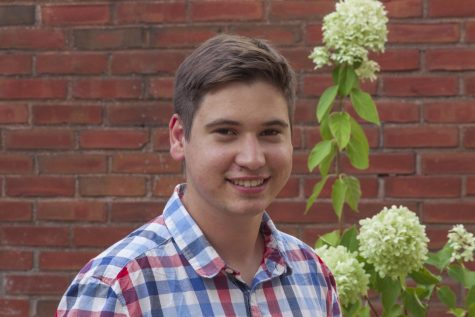Editor’s Note: How not to get student feedback
In 2012, Case Western Reserve University set out to conceive a five-year strategic plan for the school. It would guide the institution from 2013 to 2018. The finalized plan, titled “Think Beyond the Possible” and available online, focused on a mission of “[improving] and [enriching] people’s lives through research that capitalizes on the power of collaboration, and education that dramatically engages our students.”
With 2018 quickly drawing to a close, new CWRU Provost Ben Vinson III has begun the process of drafting a new plan for the next five years. Over the past few weeks, Vinson sent his first email correspondence with undergraduate students in the form of feedback requests about the new plan. While I’m glad the university is trying to collaborate with its students on the future of CWRU, it is going about as poorly as one could imagine.
I will give props to Vinson. He’s trying to receive student feedback on important issues facing campus and future planning for the university. However, he’s not trying hard enough.
Take, for instance, the town halls about the new strategic plan. Of the three sessions, two occurred over fall break. Admittedly, both of these were on Tuesday, Oct. 23, the last day of break, but one was at 10 in the morning and the other at 4 p.m. The third town hall happened at 10 a.m. on Wednesday, Oct. 17, right in the middle of midterms week.
The purpose of these town halls, I imagine, is to gather student feedback about their experiences at CWRU and collect ideas about what the university should be focusing on in the coming five years. In an Oct. 11 email, Vinson said, “We want to hear more from you about your experiences, as well as your ideas to make the university a stronger, better place—not only for students, but everyone.”
It is hard to gather student feedback when the university is on an official academic break and students take the opportunity to leave campus. And even if they did not leave for the break, students more than likely focused less on school-related activities and took a much needed mental health break. As for the one not during break, it occured in the middle of midterms week when most student feedback would probably be negative anyway. To add on to that, it happened at one of the busiest class times of the week and early in the morning. If a student wasn’t in class during that time, they were either studying or sleeping.
I can imagine it’s hard to schedule free time with the second-in-command of one of the major research institutions, let alone three time periods. But if student feedback is the goal, try keeping the students in mind.
Vinson continued in the email: “In the weeks and months to come, I will provide many additional opportunities for feedback, as well as regular updates regarding our efforts. For now, please know how very much I appreciate your ideas and perspective, especially at this hectic time of the semester.”
He also presented a survey for students to fill out along the same lines. The survey closed a week after Vinson sent it to students and included questions about what students like about the school and what they wish they had. The questions were worded oddly with phrasing that describes conversations with friends about your schools.
While a week seems like a long time to answer a survey, it was a lot more involved than your typical survey. Answering the questions properly took a paragraph at the minimum, and the survey was a lot longer than expected. While Vinson thanked the students in a follow up email for their “invaluable insights regarding the parts of this university you value most” and “the aspects most in need of improvement,” I’m not sure what types of responses he got.
In an email sent on Oct. 25, Vinson indicated 489 students (less than 10 percent of the undergraduate population) responded to the survey. He also presented general overviews of the responses, conveying common answers to questions and highlighting trends he noticed.
The end of the survey included an opportunity for students to join multiple committees for planning the strategic plan. I hope many students will join and provide valuable feedback throughout the year. But based on the recent surveys and town halls, I’m not sure the university knows how to get it.
UPDATE: Oct. 25 – 1 p.m. — On the morning of Thursday, Oct. 25, Provost Ben Vinson III sent an email to undergraduate students giving some detail on responses to the strategic planning survey mentioned in the Editor’s Note. The email was not available as of press time and was therefore not taken into consideration when writing the note. A paragraph has been added to the Editor’s Note with information regarding the number of responses to the survey and other contents of the email.

Eddie Kerekes is in his fourth year studying chemical engineering while also pursuing a minor in German. He serves as the executive editor. Previous roles...

